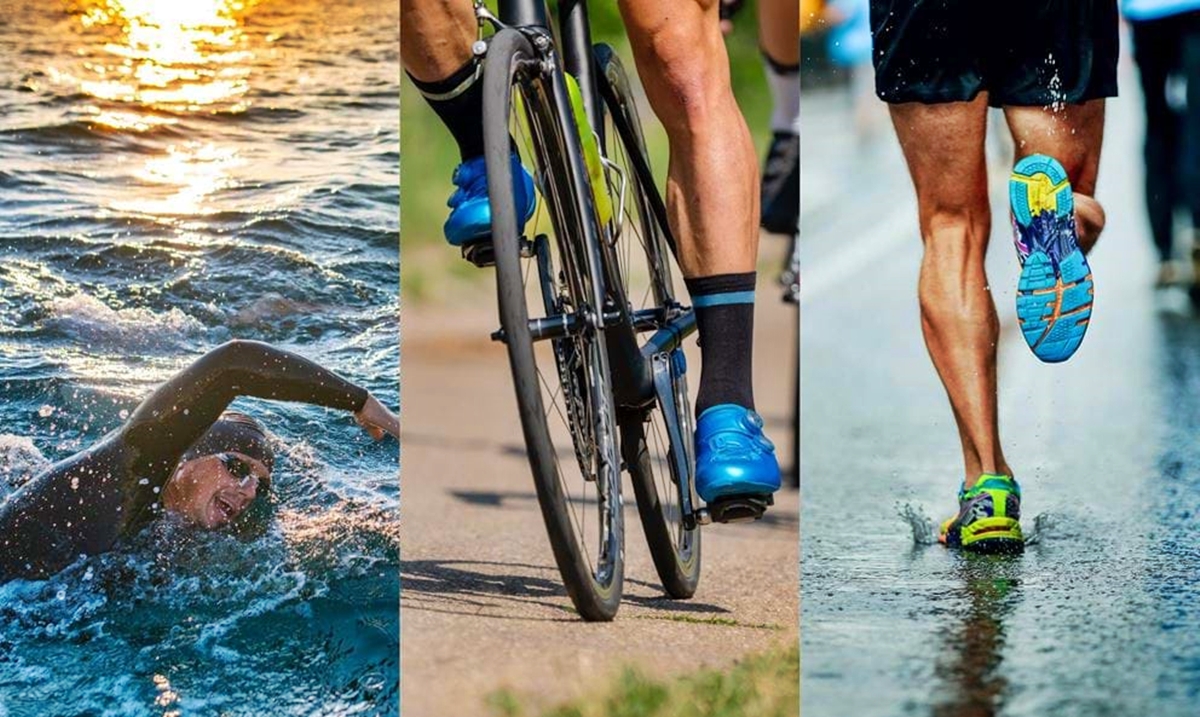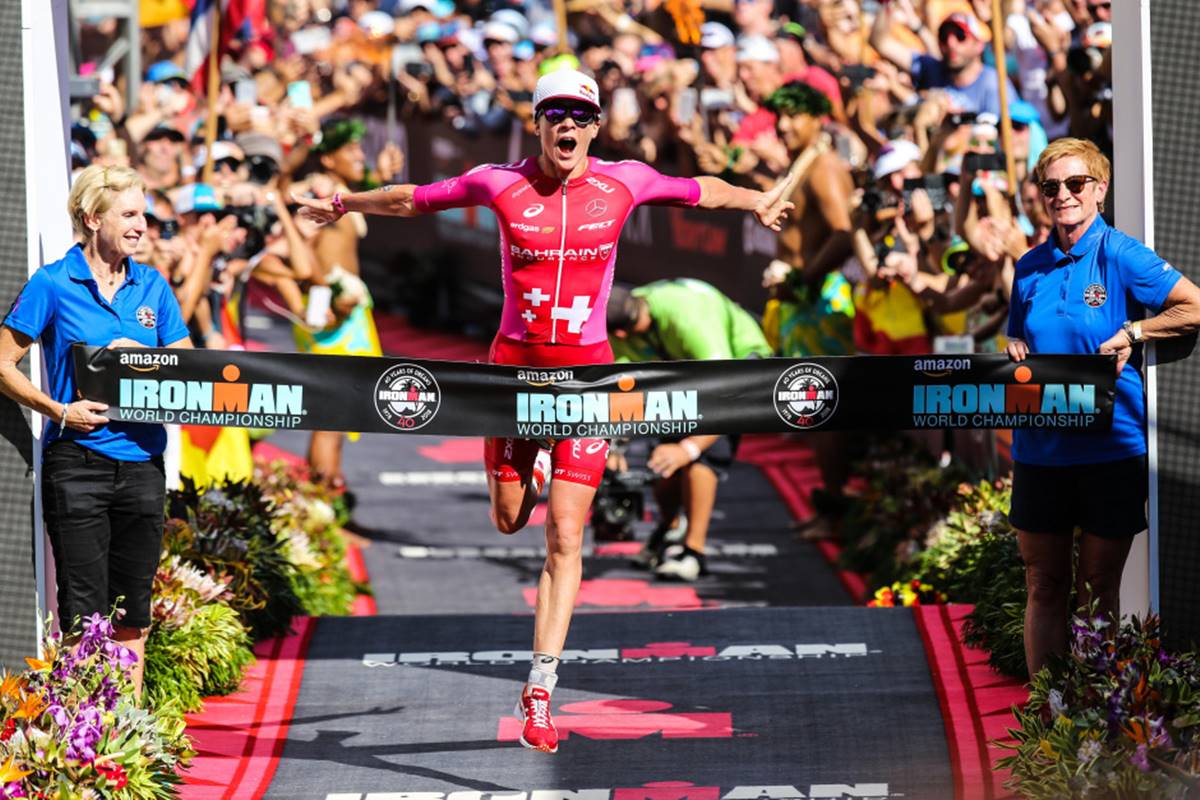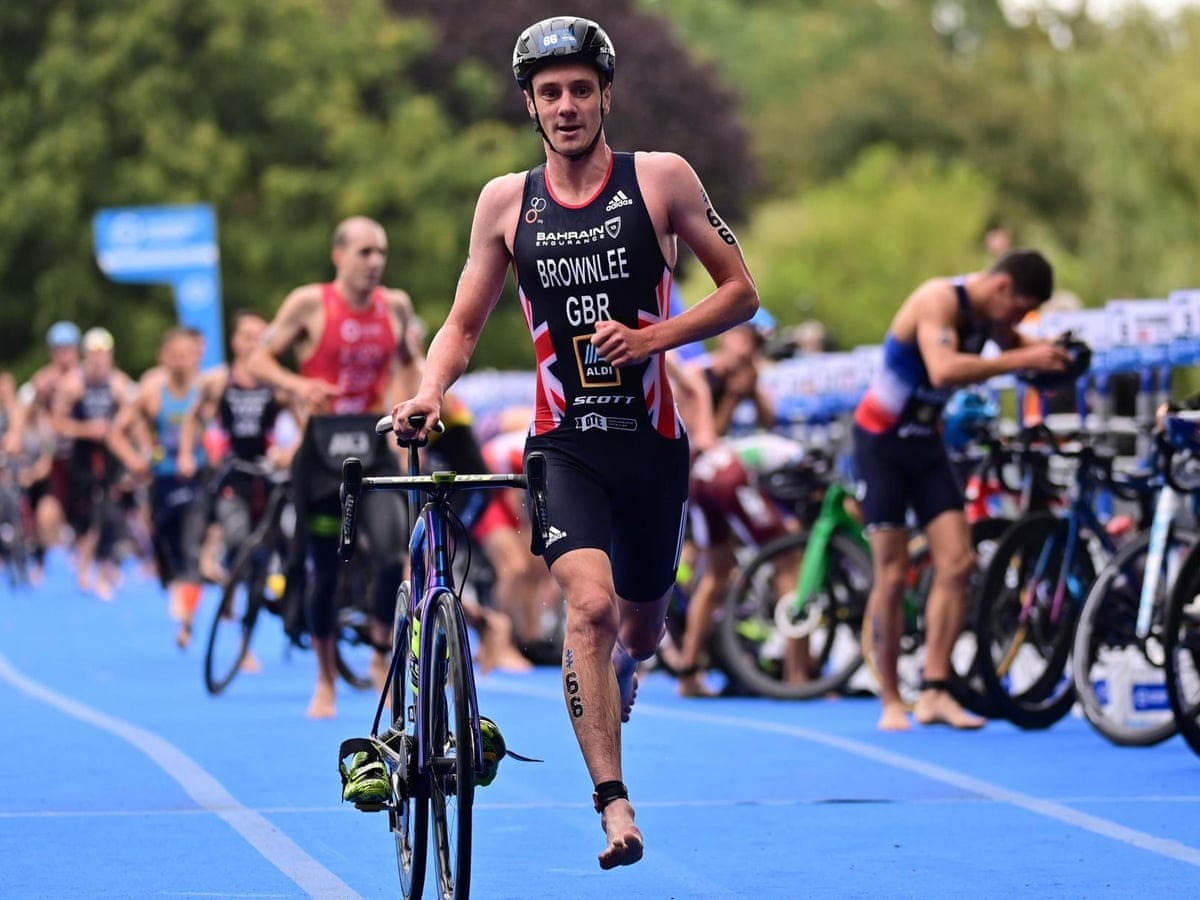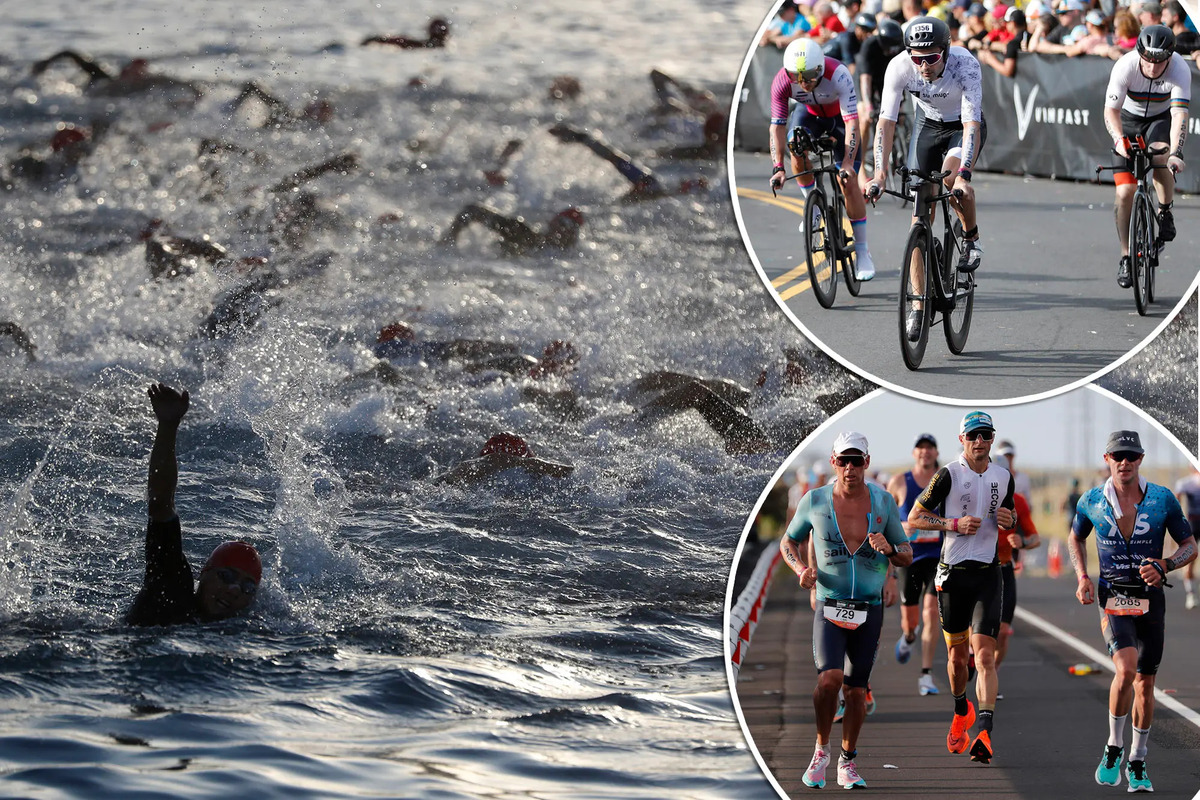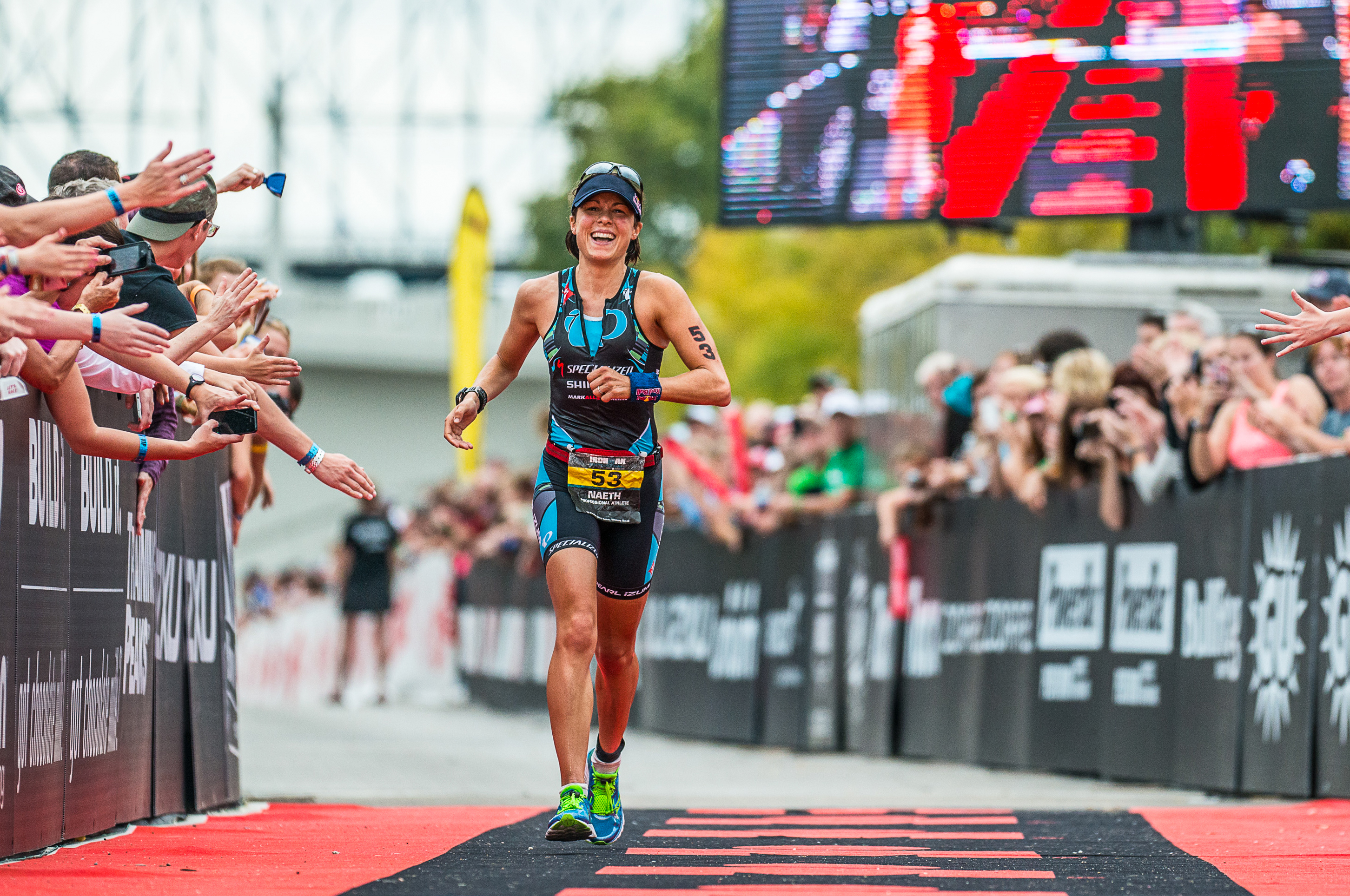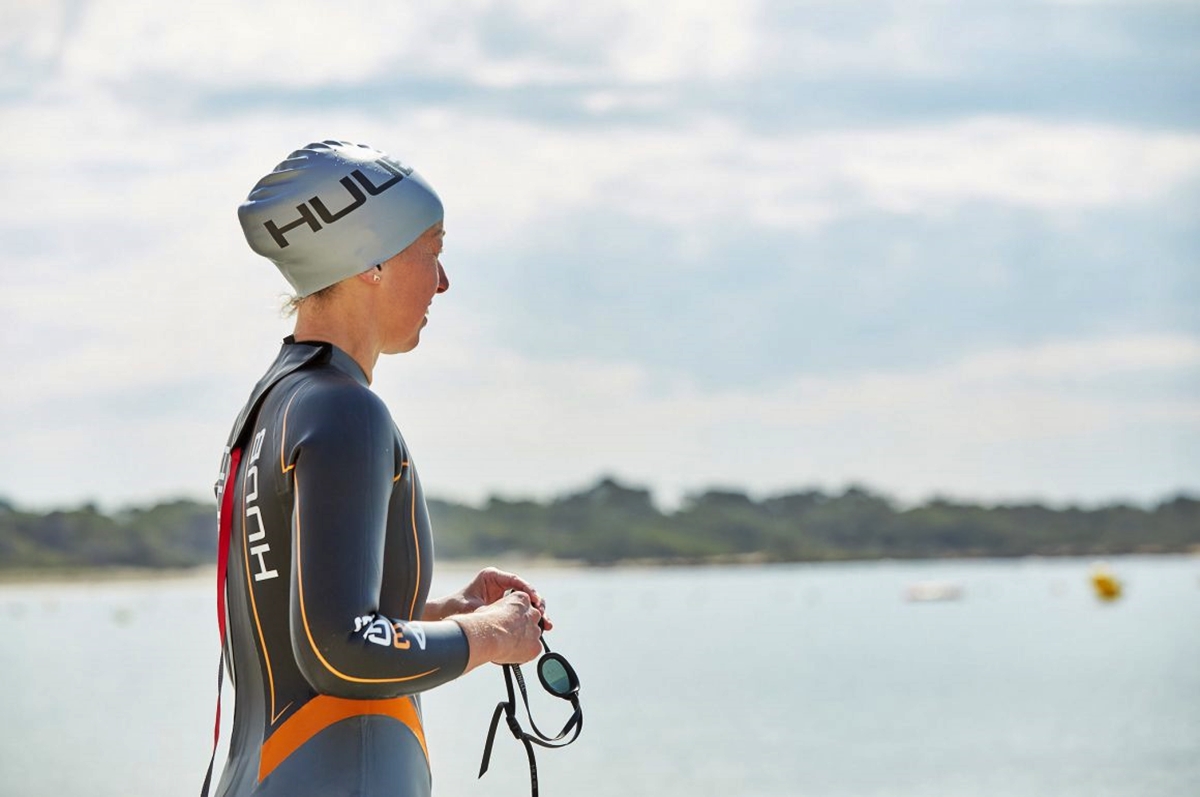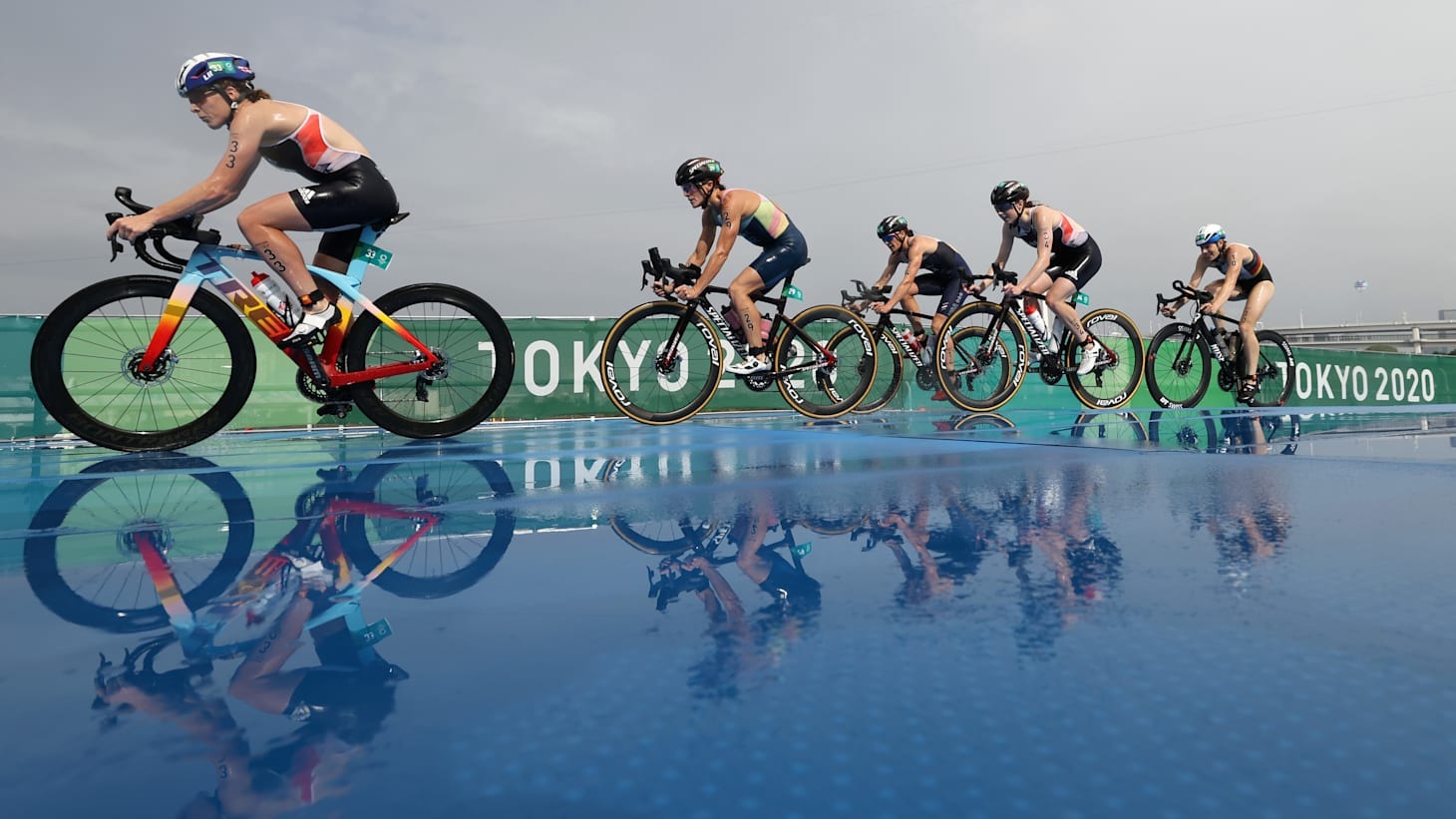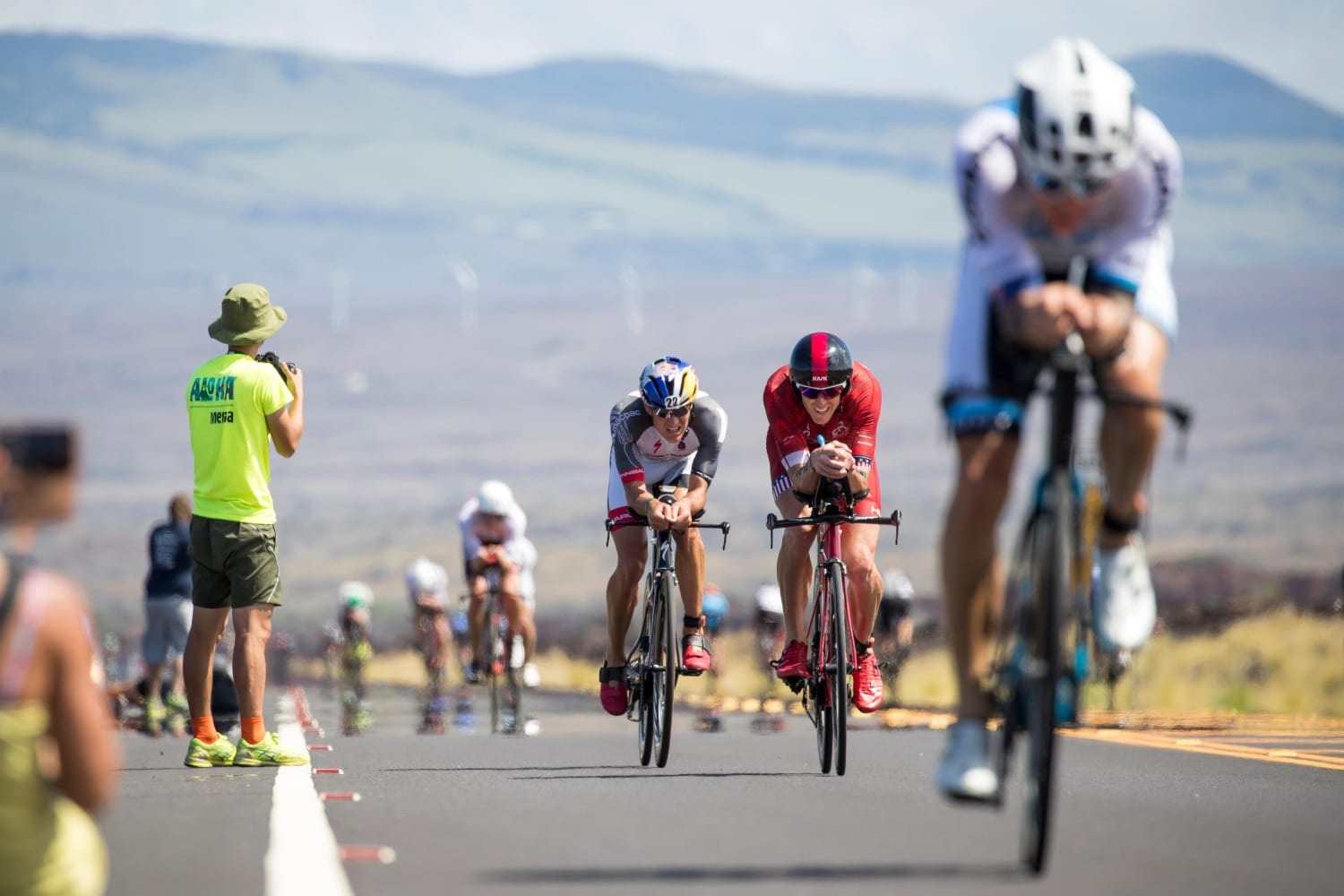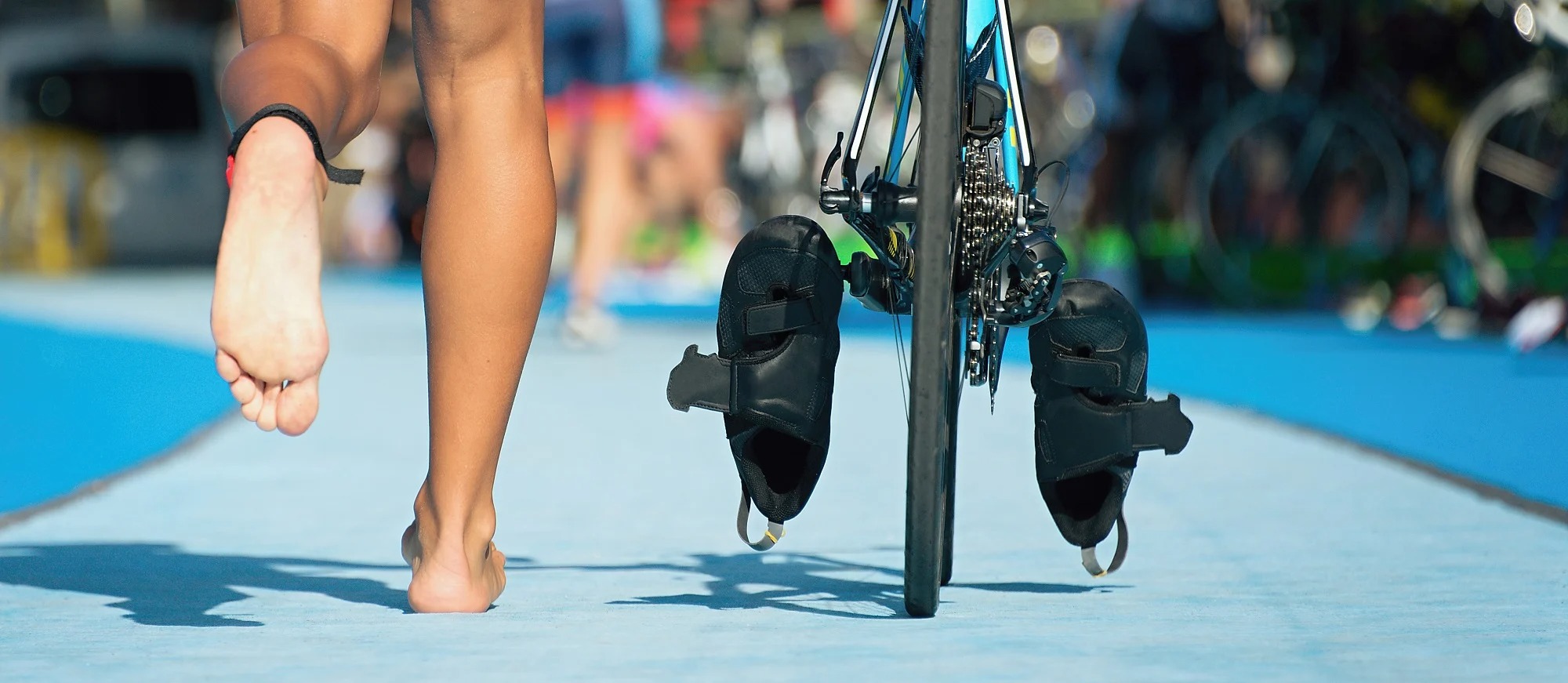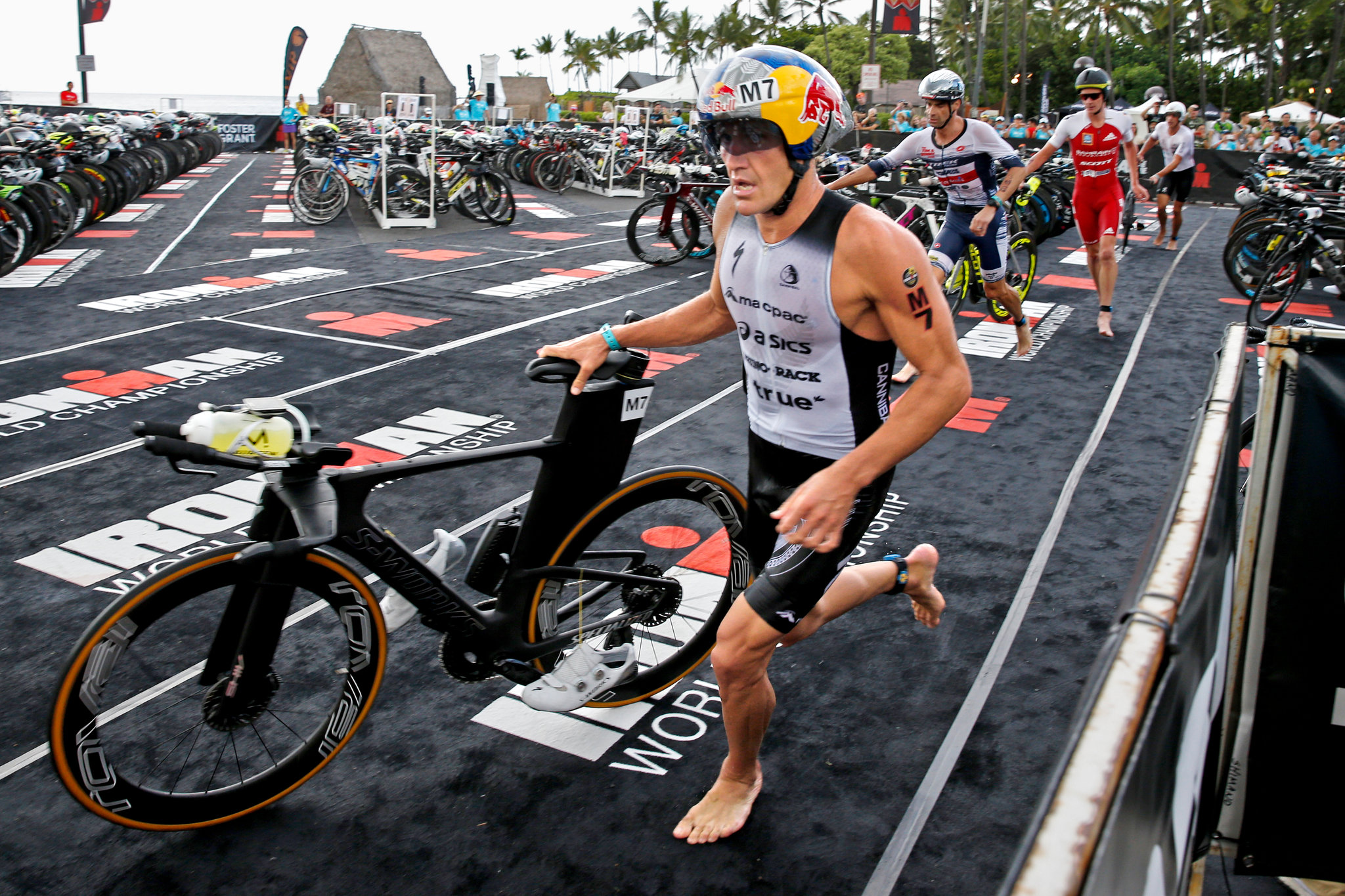

Featured
How Long Is Ironman Triathlon?
Modified: January 2, 2024
Discover the length of Ironman Triathlon, a featured endurance race spanning over grueling distances. Learn more about this ultimate test of strength and determination.
Introduction
Welcome to the thrilling world of Ironman Triathlon! For those seeking the ultimate test of endurance, this legendary event pushes athletes to their limits and beyond. A true melting pot of strength, stamina, and mental fortitude, Ironman Triathlon has captured the hearts of athletes and spectators worldwide.
Originating in the late 1970s, the Ironman Triathlon has grown from a small gathering of ambitious athletes on the shores of Waikiki, Hawaii, to become one of the most iconic endurance events in the world. With its challenging combination of swimming, biking, and running, the Ironman Triathlon is a true physical and mental feat that pushes athletes to excel in multiple disciplines.
In this article, we will delve into the fascinating history of Ironman Triathlon, explore the distances that participants must conquer, and provide valuable insights into the training and preparation required for this extraordinary event. Whether you are an aspiring Ironman or simply curious about this awe-inspiring feat, we will guide you through the triumphs and challenges of the Ironman Triathlon.
From the moment the starting gun fires to the exhilarating finish line crossing, the Ironman Triathlon is a remarkable test of human resilience. It demands unwavering dedication, meticulous planning, and a deep resolve to conquer one’s own limitations. So, step into the world of Ironman Triathlon, where endurance, perseverance, and indomitable spirit reign supreme!
History of Ironman Triathlon
The history of Ironman Triathlon can be traced back to 1978 when a group of athletes decided to settle an ongoing debate about who was the fittest: swimmers, cyclists, or runners. Thus, the first Ironman Triathlon was born on the island of Oahu, Hawaii.
The race was initially conceived as a combination of three existing endurance events: the Waikiki Roughwater Swim (2.4 miles), the Around Oahu Bike Race (115 miles), and the Honolulu Marathon (26.2 miles). The idea was to push athletes to their limits by incorporating all three disciplines into a single race.
The inaugural event attracted a total of 15 participants, who braved the grueling course. Gordon Haller, a U.S. Navy communications specialist, emerged as the champion, becoming the first-ever Ironman Triathlon winner with a time of 11 hours, 46 minutes, and 58 seconds.
News of this extraordinary event spread, and the following year, athletes flocked to Hawaii to compete in the second Ironman Triathlon. However, it was in 1980 that the race gained global recognition when ABC’s Wide World of Sports televised the event. This exposure helped to skyrocket the popularity of Ironman Triathlon, cementing its status as the pinnacle of endurance sports.
Over the years, the Ironman Triathlon expanded beyond its Hawaiian roots and began hosting events in other locations around the world. In 1982, the Ironman World Championship was established and has been held annually in Kailua-Kona, Hawaii, ever since.
Today, Ironman Triathlon events are held in various countries, attracting thousands of participants from all corners of the globe. The races have become a platform for both professional athletes and amateurs to test their physical and mental limits, inspiring countless individuals to pursue their own dreams of completing an Ironman.
The history of Ironman Triathlon is a testament to the human spirit’s resilience and the burning desire to push boundaries. It has evolved from a humble gathering of athletes to a worldwide celebration of endurance and determination.
Distances of Ironman Triathlon
The Ironman Triathlon is renowned for its daunting distances, which require participants to exhibit exceptional endurance and mental fortitude. Consisting of three disciplines – swimming, biking, and running – each discipline presents its own set of challenges. Let’s explore the distances of each component:
Swim Distance: The swim portion of the Ironman Triathlon covers a distance of 2.4 miles (3.86 kilometers). This usually takes place in open water, such as a lake or ocean, adding an additional element of unpredictability. Swimmers must navigate through waves, currents, and sometimes even choppy waters, making it a truly grueling start to the race.
Bike Distance: Once out of the water, participants transition to the bike segment, which covers a distance of 112 miles (180.25 kilometers). This portion of the race is often characterized by challenging terrains, steep climbs, and fast descents. Competitors must demonstrate both physical strength and strategic planning to conquer the demanding bike course.
Run Distance: The final leg of the Ironman Triathlon is a marathon-distance run, which covers 26.2 miles (42.2 kilometers). After swimming and cycling for extensive distances, participants must put their weary legs to the ultimate test. Endurance, mental strength, and proper pacing are vital for runners to complete this challenging part of the race.
Completing the Ironman Triathlon requires not only physical fitness but also mental resilience. The distances involved push athletes to their limits and beyond, demanding unwavering determination and a strong belief in their abilities. The cumulative distance of these three disciplines is what sets the Ironman Triathlon apart as one of the most grueling and celebrated endurance races worldwide.
Swim Distance
The swim portion of the Ironman Triathlon is the first leg of the race and involves covering a distance of 2.4 miles (3.86 kilometers). This demanding swim takes participants through open water, such as lakes, rivers, or oceans, and presents its own set of unique challenges.
Swimming in open water adds an element of unpredictability compared to swimming in a pool. Athletes must navigate through changing water conditions, including waves, currents, and sometimes even choppy waters. These factors can make the swim segment undeniably challenging, as competitors must battle against not only physical fatigue but also the natural elements.
For most Ironman Triathlon events, the swim is conducted as a mass-start, with all participants diving into the water at the same time. This creates a sense of competitiveness and intensity, as swimmers jostle for position to gain an advantage. Finding a rhythm amidst the chaos becomes crucial to maintaining momentum and conserving energy. Athletes employ various techniques, such as sighting (lifting their head out of the water to orient themselves), drafting (swimming closely behind another swimmer to reduce resistance), and bilateral breathing (alternating breathing on both sides) to optimize their swim performance.
Swim course layouts may vary from race to race, with some following a straight line from start to finish, while others consist of multiple laps or loops. Staying on course and navigating the correct buoys is essential to avoid penalties or disqualification. Swimmers must also be mindful of fellow participants, ensuring they maintain proper spacing and avoid interference with other swimmers.
Training for the swim portion of the Ironman Triathlon involves building endurance, improving technique, and acclimating to open water swimming. Athletes engage in regular swim sessions, gradually increasing their distance and working on their stroke efficiency. Open water practice is crucial to adapt to the specific challenges of swimming in non-pool environments.
With determination, preparation, and skill, participants can conquer the swim portion of the Ironman Triathlon. Overcoming the physical and mental obstacles of open water swimming sets the stage for the challenging bike and run segments that lie ahead.
Bike Distance
The bike portion of the Ironman Triathlon is a true test of both physical strength and strategic planning, as participants must cover a distance of 112 miles (180.25 kilometers). This segment, sandwiched between the swim and run, serves as a pivotal part of the race.
Cyclists embark on a challenging journey that often takes them through varied terrains. The bike course typically consists of roads that wind through urban areas, rural landscapes, and sometimes even mountainous terrain. Athletes must be prepared to tackle a mix of inclines, descents, and flat stretches throughout the course, demanding a versatile skill set and a well-tuned bike.
Gaining and maintaining momentum is key during the bike leg. Athletes strive to strike a balance between pushing themselves to maintain a competitive pace and preserving enough energy for the demanding marathon run that awaits them. Maintaining proper nutrition and hydration plays a vital role in preventing fatigue and ensuring optimal performance.
Wind conditions can significantly impact the bike portion of the race, especially on open roads or coastal routes. Cyclists must contend with headwinds, crosswinds, or tailwinds, which can affect their speed and stability. Skilled riders carefully assess wind patterns and adjust their positioning and tactics accordingly to minimize resistance and maintain a steady cadence.
In addition to the physical demands of the bike leg, strategic planning is crucial for success. Athletes must pace themselves effectively, managing their effort and energy expenditure throughout the course. Splitting the bike segment into smaller milestones can help mentally break down the daunting distance, boosting motivation and focus.
Preparing for the bike leg of the Ironman Triathlon requires both physical fitness and technical proficiency on the bike. Riders engage in regular training, incorporating long rides to build endurance, hill repeats to strengthen their legs, and intervals to improve speed and power output. They also fine-tune their bike fit and equipment to maximize comfort and efficiency.
Mastering the bike distance in the Ironman Triathlon requires a combination of physical strength, strategic planning, and mental resilience. Enduring multiple hours in the saddle and overcoming various terrains contribute to the extraordinary accomplishments of those who complete this challenging leg of the race.
Run Distance
The run portion of the Ironman Triathlon is the final and arguably the most mentally and physically challenging segment. Athletes must complete a full marathon distance of 26.2 miles (42.2 kilometers) after already swimming and biking long distances. The run marks the ultimate test of endurance, perseverance, and mental strength.
Starting the run leg of an Ironman Triathlon is no simple feat. Athletes’ legs are fatigued from the previous disciplines, and the body is pushed to its limits. However, with proper training and mental preparation, participants can conquer this demanding distance and reach the finish line.
Running a marathon distance after swimming and biking requires careful pacing and energy management. Athletes need to find their rhythm early on and maintain a steady pace throughout the run. It’s crucial not to start too fast and risk burning out prematurely. Strategic hydration and fueling are also essential to replenish the body’s depleted energy stores and maintain optimal performance.
The run segment often takes participants through a scenic course, traversing a mix of roads, trails, and possibly challenging terrains. It is not uncommon to encounter hilly stretches, uneven surfaces, and varying weather conditions. Mental preparation is key, as athletes must push through fatigue, muscle soreness, and mental doubt to reach the finish line.
As the kilometers tick by, the support of spectators, fellow participants, and volunteers becomes invaluable. Their cheering, encouragement, and aid stations offering water, electrolytes, and nutritional support serve as critical motivation and fuel for athletes to keep pushing forward.
Training for the run portion of the Ironman Triathlon involves progressively building mileage, improving endurance, and practicing mental resilience. Long-distance runs, tempo workouts, and interval training are key components of a runner’s preparation. Mental training techniques, such as visualization and positive affirmations, help athletes stay focused and overcome the mental hurdles they may encounter during the grueling marathon distance.
Completion of the run distance in the Ironman Triathlon is a testament to an athlete’s mental and physical strength. It represents the final push towards victory, where participants conquer their own doubts, fatigue, and pain to arrive at the finish line and achieve their Ironman dream.
Duration of Ironman Triathlon
The Ironman Triathlon is a true test of endurance, pushing athletes to their physical and mental limits. The duration of an Ironman Triathlon can vary greatly depending on various factors, including personal fitness level, course difficulty, and weather conditions. On average, it takes participants anywhere from 8 to 17 hours to complete the race.
Professional triathletes often set the pace, finishing the Ironman Triathlon in impressive times of around 8 to 9 hours. These elite athletes possess exceptional speed, endurance, and years of dedicated training. They consistently push the boundaries of what is considered possible in the sport.
Amateur athletes, who make up the majority of Ironman participants, typically complete the race within the range of 11 to 17 hours. This includes the time spent on each discipline – swimming, biking, and running – as well as the transitions between them.
The swim portion generally takes most athletes between 1 and 2 hours. Factors such as open water conditions, swim skills, and crowd congestion can influence the swim duration.
The bike leg, covering a distance of 112 miles, can range from 5 to 8 hours. Variables such as terrain, wind conditions, and individual fitness levels impact the overall bike time.
The marathon run, the final segment of the Ironman Triathlon, typically takes athletes between 3 and 6 hours to complete. This can be affected by fatigue from the previous disciplines, hydration and nutrition strategies, and mental strength to overcome physical exhaustion.
It’s important to note that the Ironman Triathlon imposes specific cutoff times to ensure the safety of participants and ensure race day operations run smoothly. Athletes must complete the entire race within a predetermined timeframe, usually around 17 hours from the race start. Those unable to meet the cutoff times may receive penalties or be disqualified from the event.
Training for the Ironman Triathlon requires months of preparation, gradually increasing training volume and intensity. Athletes focus on building endurance, honing their skills in each discipline, and developing mental toughness to endure the duration of the race.
Ultimately, completing an Ironman Triathlon within any timeframe is a remarkable achievement. It represents the culmination of months and even years of hard work, dedication, and unwavering determination to cross the finish line and become an Ironman.
Training for Ironman Triathlon
Preparing for an Ironman Triathlon requires meticulous planning, dedication, and a well-structured training program. Endurance, strength, and mental resilience are all key components that athletes must develop to conquer the grueling distances. Let’s explore the essential aspects of training for an Ironman Triathlon.
Time Commitment: Training for an Ironman Triathlon is a significant time commitment. Athletes typically devote 12 to 20 hours per week to training, gradually increasing training volume as the race approaches. Balancing work, family, and other commitments is crucial in maintaining consistency and avoiding burnout.
Discipline-Specific Training: Each discipline – swimming, biking, and running – requires specific training. Athletes focus on building endurance, improving technique, and increasing speed in each discipline. Incorporating interval training, long-distance sessions, and brick workouts (consecutive workouts combining two disciplines) helps simulate race conditions and enhance performance.
Strength Training: Strength training plays a vital role in injury prevention and overall performance. Incorporating exercises that target the core, legs, and upper body helps improve muscular endurance and stability. Athletes may include weightlifting, bodyweight exercises, or functional strength workouts in their training regimen.
Brick Workouts: Brick workouts involve training in multiple disciplines without rest in between. These sessions help athletes adapt to the physical and mental challenges of smoothly transitioning from one discipline to another. For example, combining a long bike ride immediately followed by a run helps simulate the sensations experienced during the race.
Nutrition and Hydration: Proper nutrition and hydration are crucial aspects of Ironman Triathlon training. Athletes must fuel their bodies with a balanced diet, focusing on carbohydrates, proteins, and healthy fats for optimum performance and recovery. During training, they practice their race day nutrition and hydration strategies to ensure they can sustain energy levels during the long hours of racing.
Mental Conditioning: Training the mind is equally important as training the body. Ironman Triathlon requires mental resilience and determination to overcome obstacles and push through pain and fatigue. Athletes may use visualization techniques, positive self-talk, and goal setting to strengthen their mental fortitude and stay focused during the race.
Race Simulations: Simulating race conditions helps athletes prepare physically and mentally for the Ironman Triathlon. Participating in shorter triathlon races or organizing self-designed simulations allows athletes to practice transitions, pacing, and race-day logistics. It also provides an opportunity to identify weaknesses and areas that need improvement.
Training for an Ironman Triathlon is a transformative journey that demands commitment, sacrifice, and resilience. Following a well-structured training plan, incorporating discipline-specific workouts, and addressing factors like nutrition and mental conditioning will empower athletes to conquer the grueling distances and achieve their Ironman Triathlon goals.
Tips for Completing an Ironman Triathlon
Completing an Ironman Triathlon is an extraordinary accomplishment that requires physical endurance, mental strength, and meticulous preparation. Here are some essential tips to help you navigate the challenges and successfully cross the finish line:
1. Set Clear Goals: Define your goals for the race, whether it’s simply finishing or achieving a specific time. Having clear goals will provide focus and motivation throughout your training and on race day.
2. Follow a Structured Training Plan: Create or seek guidance from a qualified coach to develop a well-structured training plan. Consistency in training, including all three disciplines, will help build the necessary endurance and fitness to complete the race.
3. Practice Transitions: Transition times can significantly impact your overall race time. Practice efficiently transitioning from swim to bike and bike to run to minimize time lost during the changeovers.
4. Emphasize Brick Workouts: Incorporate brick workouts into your training routine regularly. These will help your body adapt to the demands of transitioning from one discipline to another and enhance your race-day performance.
5. Simulate Long-Distance Sessions: As your race approaches, gradually increase the duration and distance of your training sessions to simulate the demands of the race. Building your endurance will give you the confidence and physical capacity to complete the distance.
6. Practice Nutrition and Hydration: Develop a nutrition and hydration strategy for race day and practice it during your longer training sessions. Experiment with different options to find what works best for you and helps sustain your energy levels throughout the race.
7. Prioritize Recovery: Adequate rest and recovery are as important as training itself. Listen to your body and allow time for proper recovery to prevent injuries and keep your body in optimal condition for the race.
8. Mental Preparation: Train your mind to stay focused and positive during the race. Visualize yourself crossing the finish line, practice positive self-talk, and develop strategies to overcome mental hurdles that may arise during the race.
9. Don’t Neglect Strength Training: Incorporate strength training exercises into your routine to enhance muscular endurance and reduce the risk of injuries. Focus on key muscle groups used in swimming, cycling, and running.
10. Enjoy the Journey: Remember to enjoy the process and embrace the journey. Ironman Triathlon is not just about the race day itself but also about the training, self-discovery, and personal growth that come along the way. Cherish the experience and celebrate every milestone achieved.
Completing an Ironman Triathlon is a monumental achievement that requires determination, perseverance, and dedication. By following these tips and embracing the physical and mental challenges, you can cross the finish line and join the ranks of Ironman athletes worldwide.
Conclusion
The Ironman Triathlon is much more than just a race; it is a testament to the indomitable spirit of human endurance. From its humble beginnings to its worldwide recognition today, the Ironman Triathlon continues to captivate the hearts and minds of athletes and spectators alike.
Throughout this article, we have explored the history of the Ironman Triathlon, the daunting distances of each discipline, the duration of the race, and the essential training and preparation required to take on this epic challenge.
The Ironman Triathlon demands unwavering dedication, rigorous training, and mental fortitude like no other endurance event. It pushes athletes to their limits and beyond, challenging them to overcome physical fatigue, mental obstacles, and self-doubt.
Completing an Ironman Triathlon is not just a personal achievement; it is a celebration of the human potential. Crossing the finish line represents a triumph of the human spirit, an affirmation that with determination, perseverance, and the right mindset, we can accomplish things that once seemed impossible.
Whether you are an aspiring Ironman, a seasoned triathlete, or simply intrigued by the world of endurance sports, the Ironman Triathlon serves as an inspiring reminder of what individuals can achieve when they push themselves to new heights.
So, lace up your running shoes, hop on your bike, and dive into the water. Embrace the challenge, embark on the extraordinary journey, and join the ranks of those who have become Ironman Triathlon finishers.
Remember, in the world of Ironman, the finish line is just the beginning of a lifelong journey filled with personal growth and the pursuit of new horizons. The only limits that exist are the ones we place upon ourselves.
